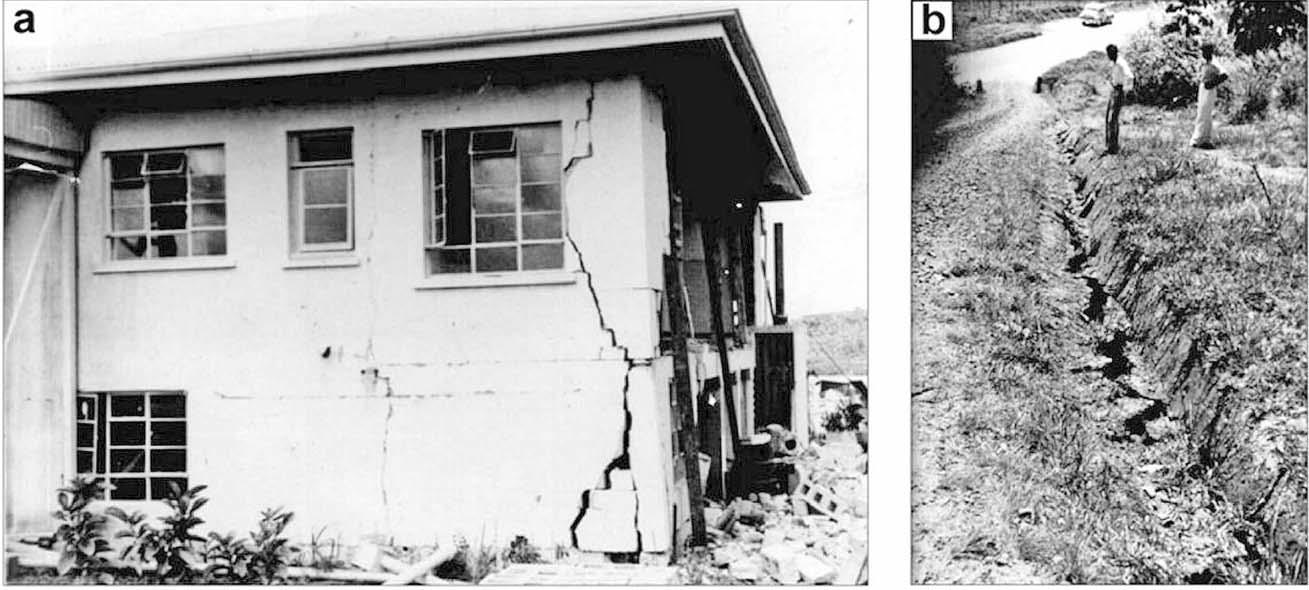Greetings readers! Today I wanted to take you back in time to Monday, September 14, 1953, at precisely 00.26:34 the deadliest and most destructive earthquake seen in Fiji’s history struck our island nation, particularly Suva. The force was magnitude 6.8 with a depth of 10kms.
Unfortunately, there were eight known fatalities that were reported, five of them were caused by the tsunami itself which followed the mainshock, and more than 20 other people were seriously injured in and around the island’s capital city.
Of the eight fatalities, one was a Chinese male who was struck by falling cement at the Sikh temple in Samabula, the second fatality was a very sad event indeed, as a young boy was violently swept away and drowned when the tidal wave hit the coast of the Suva peninsula in Nasese.
There could possibly have been more than the eight reported fatalities as many fishermen were probably out in their canoes and other small fishing vessels when the earthquake struck.
The earthquake’s most powerful force was felt just off the southeast shore of Viti Levu, and thus triggered a coral reef platform collapse and a landslide that caused a tsunami.
The largest earthquake tremor lasted between 25 and 30 seconds and shook buildings throughout the capital as never felt before.
The force was so great that people ran for cover and hid under tables and secure furniture, there were aftershocks, but the damage was already done.
The first sign of the tsunami was observed about one minute after the earthquake when the sea surface rippled and pushed forward with great force.
This was observed by the Captain of the Adi Tirisa, which was located off the reef approximately 4 to 5 miles southwest of Suva.
Suddenly, the once calm ocean was badly shaken and a huge wave burst out of the sea, carrying mud, stones, and parts of a wrecked vessel which must have been lying at the bottom of the sea.
The location of this disturbance was at the western end of the entrance to the Suva Passage.
It was a very frightening sudden course of events and anyone who witnessed this scene I am sure will never forget it.
My father was a strong and independent young man at the time living and working in Suva City, and he recalled that fateful night clearly and says he could never erase the memories even though he is approaching the 90th year in this life.
It was indeed traumatic, and the earthquake was the most destructive in Fiji’s recorded history, the tremor itself killing three people and seriously injuring twenty others.
The most serious damage occurred in the southeastern part of Viti Levu. The tsunami caused particular damage to coastal areas not protected by barrier reefs, devastating the villages of Nakasaleka and Makaluva.
There were five deaths from the tsunami, three at Suva and two at Nakasaleka.
We have to thank our lucky stars — had the tsunami occurred at high tide rather than low tide it would have been even more damaging. The landslide that caused the tsunami generated dangerous currents that damaged several underwater cables in the Suva seabed.
The total damage caused by the earthquake and tsunami was immense with the wharf, bridges, and buildings being damaged in Suva and the surrounding areas.
At the time my father was living by Nabukalou Creek where Tappoocity is situated today, in the heart of Suva City, he remembers the screams and anxiety on everyone’s faces as the disaster unfolded.
You could see the destruction that had swept through and ravaged homes, shops and buildings alike not sparing anything it its path.
During this time Fiji was under British Colonial rule and it did seem that the majority of the hierarchy were more interested in the welfare of their own people and the damaged colonial structures, rather than rushing to the aid of the locals and tending to them.
My father, being a young and fit man, was summoned by the local authorities along with many others to assist in the clean-up of various designated areas Suvawide.
He was happy to help in any way he could and being civic minded, he worked throughout the day on various tasks assigned to him.
It was a terrible experience to go through, but he noted despite this, the outpouring of the local community spirit and a willingness of everyone to come together regardless of age, gender, creed, caste or religion was a great sight to see.
He expressed to me only last week that in tragedy comes a unique chance to assist and we should never miss the opportunity to help and to also grab any chance to serve others with both hands. This was that opportunity and it seemed everybody in the community came out to care for the weak, poor and vulnerable in our society.
Monday, September 14, 1953 will live long in the memories of the few that are still alive today and witnessed this event.
Also, this should be a reminder that we must always be vigilant and respectful of the ocean and the weather patterns in our region.
• AJAY BHAI AMRIT is a founding member of The People’s Alliance party and is also a freelance writer. The views expressed in this article are his and do not necessarily reflect the views of this newspaper.



